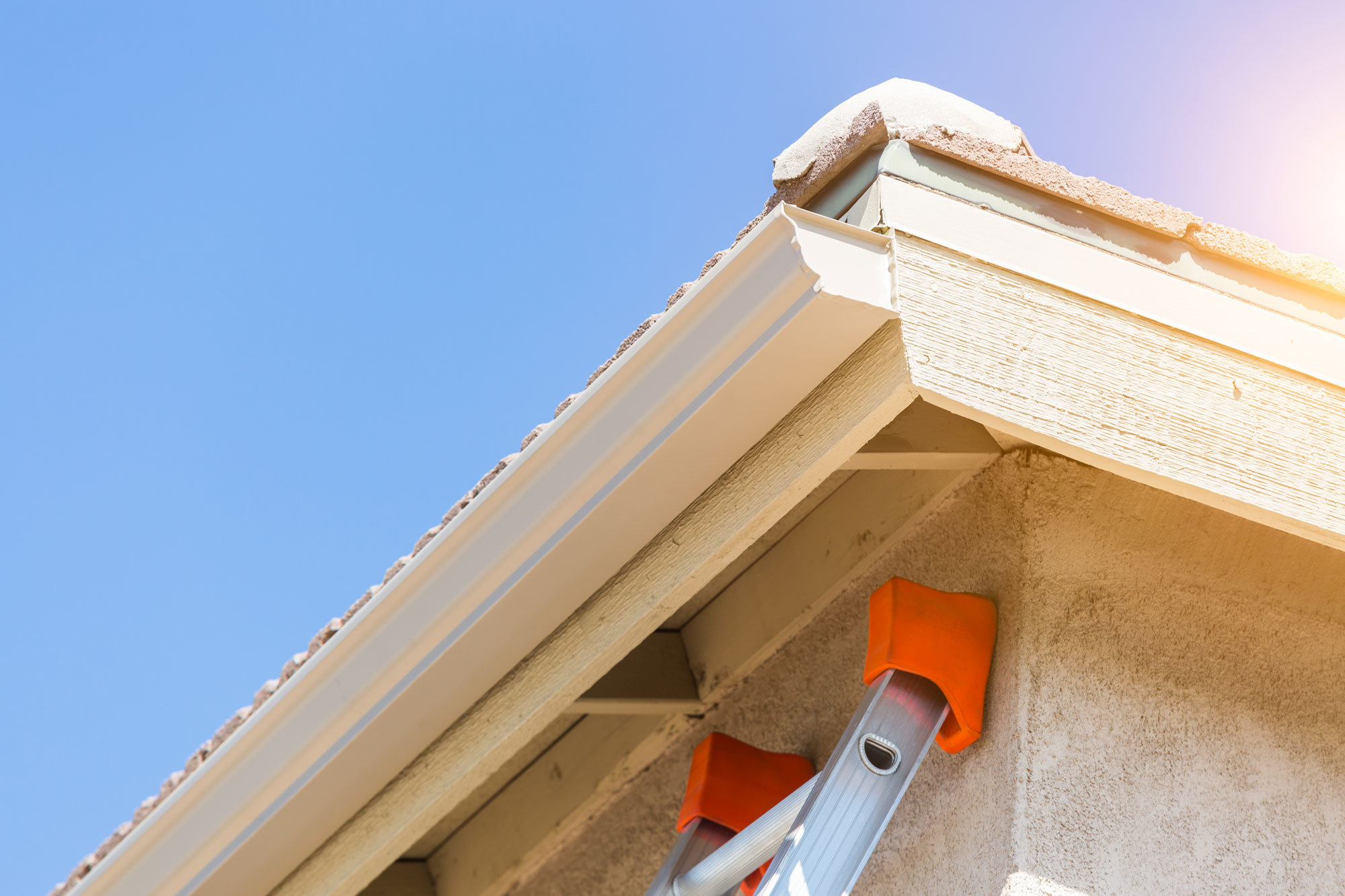Proper gutter maintenance is essential for protecting your home from water damage. Gutters play a crucial role in directing rainwater away from your home’s foundation, roof, and walls. Neglecting them can lead to costly repairs and damage. Implementing a regular gutter maintenance routine ensures they function efficiently and prolong their lifespan. Here are four essential tips to keep your gutters in top condition.
1. Regular Cleaning
Regular cleaning is the most important aspect of gutter maintenance. Gutters can easily become clogged with leaves, twigs, and other debris, especially during the fall season. Damage to your home’s roof, walls, and foundation can result from water overflowing clogged gutters. Gutter cleaning in the spring and autumn will prevent this from happening. Make sure you have a solid ladder, gloves, and maybe even a garden trowel on hand to safely remove any debris. Make sure the water can easily flow down the drains and use a garden hose to remove any residual debris for a more effective cleaning.
In addition to biannual cleanings, inspect your gutters after heavy storms or winds. Storms can deposit a large amount of debris in a short period, potentially causing clogs. Regular inspections and prompt cleanings after storms will help maintain the effectiveness of your gutters and prevent unexpected issues. If climbing a ladder isn’t feasible or safe for you, consider hiring a professional gutter cleaning service. Investing in professional help ensures thorough cleaning and reduces the risk of accidents.
2. Check for Damage and Wear
Inspecting your gutters for damage and wear is another crucial maintenance step. Over time, gutters can develop cracks, rust spots, or loose fasteners, which can impair their functionality. Carefully examine your gutters for any visible signs of damage, such as sagging, holes, or leaks. Pay close attention to the joints and seams, as these areas are prone to leaks and separations. If you notice any damage, address it promptly to prevent further deterioration.
Repairing minor issues can often be a DIY task. Small holes or cracks can be sealed with gutter sealant and loose fasteners can be tightened with a screwdriver. However, if you encounter significant damage or extensive wear, it might be best to consult a professional. Replacing damaged sections or realigning gutters requires specific tools and expertise. Regular inspections and timely repairs will ensure your gutters remain in good working condition, effectively protecting your home from water damage.
3. Install Gutter Guards with the Help of Professionals
Installing gutter guards is a proactive step in maintaining your gutters and reducing the frequency of cleanings. These guards help prevent debris from clogging the gutters, allowing water to flow freely and minimizing the risk of overflow and damage. A professional gutter company can assist in selecting and installing the appropriate type of gutter guards for your system. Proper installation ensures that the guards are securely fitted and effective at keeping out leaves and other debris. By investing in gutter guards, you can enhance the longevity of your gutters and reduce the need for regular maintenance.
4. Ensure Proper Water Flow
Ensuring proper water flow through your gutters and downspouts is vital for their effectiveness. After cleaning your gutters and checking for damage, test the water flow using a garden hose. Start at the farthest end of the gutter and let the water run towards the downspouts. Observe the flow to ensure there are no blockages or slow-draining areas.
If you notice any issues, such as water pooling in certain sections or slow drainage, investigate the cause. It could be due to a clog in the downspout, improper slope, or debris buildup. Clear any blockages and adjust the slope of your gutters if necessary. The recommended slope is about 1/4 inch for every 10 feet of gutter length. This ensures that water flows smoothly towards the downspouts and away from your home.
In addition to checking the gutters, inspect the downspouts for any obstructions. Make sure the downspouts extend at least 5 feet away from your home’s foundation to prevent water from pooling near the base. You can use downspout extensions or splash blocks to direct water further away if needed. Proper water flow ensures that your gutters effectively channel rainwater away from your home, preventing water damage and erosion.
Conclusion
Maintaining your gutters is essential for protecting your home from water damage and ensuring the longevity of your roofing system. By regularly cleaning your gutters, checking for damage, installing gutter guards, and ensuring proper water flow, you can keep your gutters in optimal condition. These simple yet effective tips can save you from costly repairs and extend the life of your gutter system. Implementing a regular gutter maintenance routine will help preserve the structural integrity of your home and provide peace of mind, knowing that your property is well-protected.
Keep an eye for more news & updates on TribuneTribune!




